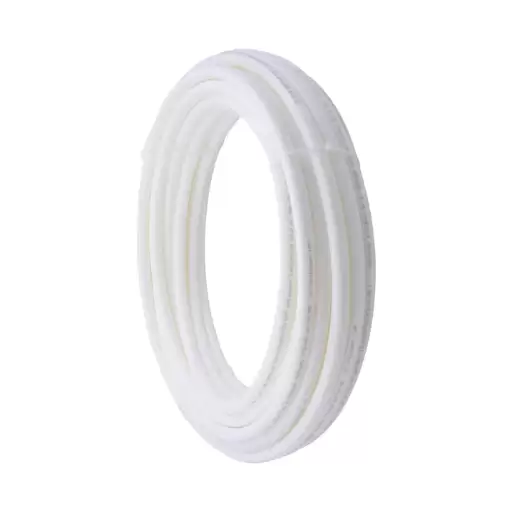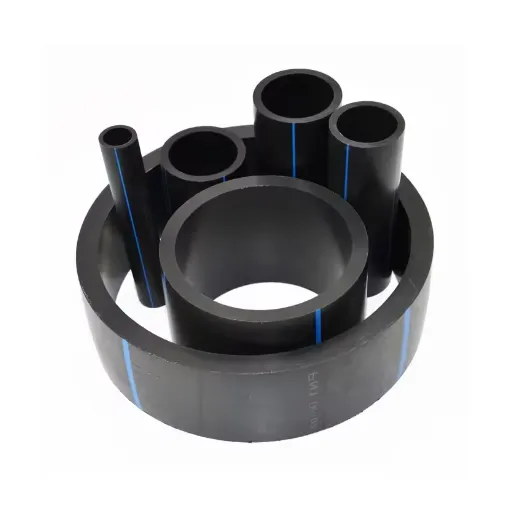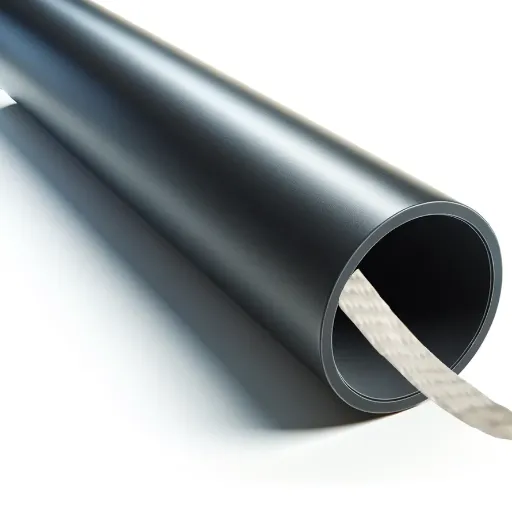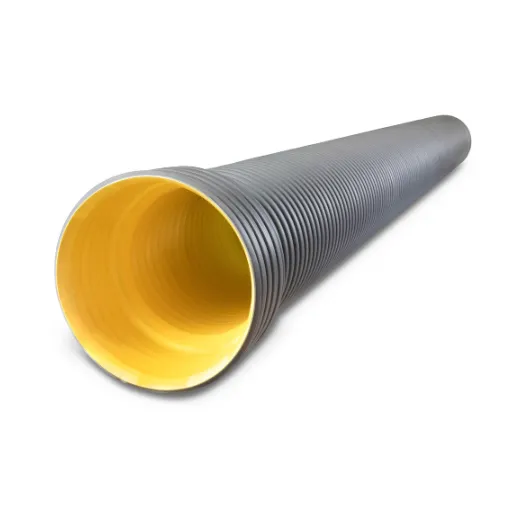When it comes to designing efficient and durable plumbing systems, choosing the right materials is crucial. Among the many options available, 3/4 PEX pipe has emerged as a game-changer for both residential and commercial applications. This innovative piping solution combines flexibility, strength, and cost-effectiveness, making it a preferred choice among modern plumbers and contractors. But what makes 3/4 PEX pipe truly stand out? This article will explore its superior features, practical applications, and why it is becoming the go-to solution for tackling today’s plumbing challenges. Whether you’re a professional contractor or a homeowner planning a renovation, read on to discover how 3/4 PEX pipe can transform your plumbing projects.
Benefits of Using 3/4 PEX Pipe in Water Systems
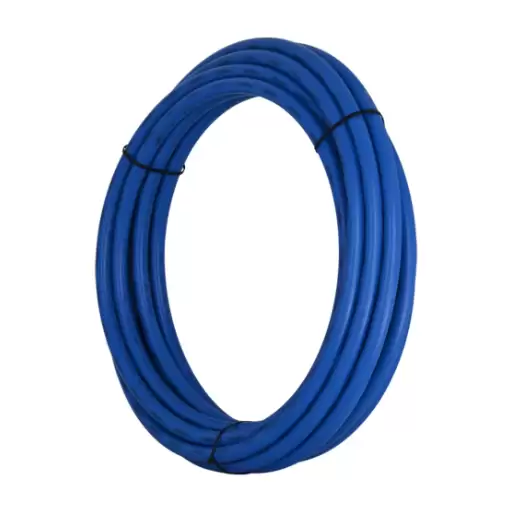
Durability and Longevity of PEX
PEX (cross-linked polyethylene) pipe is manufactured for the utmost durability, constituting an ideal water system pipe worthy of installations in homes and commercial environments. Among many other factors that make PEX highly durable is the fact that it does not corrode or scale most common problems faced by metal pipes like copper or galvanized steel. This, in turn, has meant that the water systems installed with PEX have a much longer operational life since rusting or corrosion with time is not an issue.
Secondly, the flexibility and strength of PEX pipes guarantee longevity. They can expand and contract with temperature changes, thereby preventing cracking or breaking that occurs with freezing or thermal expansion. This characteristic ensures that the pipe lasts longer and reduces maintenance costs. Being seamless further minimizes leaks, which adds to the durability of the pipe over time.
Moreover, PEX pipe stands against chemical interference, using chlorine as an example of common household contaminants, maintains its structure even in high-pressure systems, thus accommodating all variations in water temperature and conditions. With the added advantage of ease of installation and its durability against environmental stressors, 3/4 PEX pipe is the long-term solution for meeting modern plumbing demands.
Flexibility and Ease of Installation
One of the greatest advantages of PEX plumbing in modern plumbing is the inherent flexibility of the pipe. In contrast with rigid piping materials, the PEX pipe may bend around corners and obstacles, thereby reducing the need for extra fittings. This flexibility not only facilitates the installation but also reduces the possibility of leakage since fewer joining points are necessary. Industry standards also state that PEX can bend around tight spaces without losing its structural integrity. Hence, it is an ideal choice for residential and commercial plumbing systems.
The lightweight nature of PEX further enhances ease of installation. The installer can quickly transport and carry the material, thus easily giving way to other labor-intensive processes. Moreover, a PEX connection uses a special type of fitting and tools, such as crimp rings or a push-to-connect system, allowing a fast and secure connection. This is an installation method that takes considerably less time than traditional copper or PVC work. According to industry studies, PEX installation can be up to 30% faster than conventional methods under typical conditions.
Beyond this, services using PEX pipes integrate manifold systems for centralized water distribution control. This system design is flexible in routing and easy to maintain since an engineer can isolate and shut down particular lines without disrupting the rest of the system. The PEX pipes are thus suitable for a range of applications, which, together with easy installation methods, makes it a preferred choice among professional plumbers, as well as DIYers. The synergy of flexibility, ease of use, and track record for solid performance cements PEX pipes as the plumbing solution for the modern workforce.
Corrosion Resistance Compared to Copper
One important advantage of PEX piping versus copper is corrosion resistance. Copper pipes, although strong, are prone to corrosion, which occurs due to water chemistry, acidity, or a high mineral content in some locations. This corrosion may develop into pinhole leaks, reduced water flow, and outright failure of the pipe. Unlike copper, PEX pipes are fabricated with cross-linked polyethylene, which is non-metallic and absolutely resistant to corrosion due to water or any environmental factors.
Besides, PEX pipes remain unaffected by many of the chemical reactions that render copper vulnerable. That is to say, copper tends to be very sensitive to oxidizing agents; it may acquire some sort of patina or internal buildup that impairs its structural integrity and water quality. PEX, instead, does away with such a hazard and remains in top performance and durability conditions even in the presence of aggressive water or varying temperatures.
Cost-wise and maintenance-wise, PEX further makes the claim for its superiority. Copper corrosion usually demands costly repairs or pipe replacements, especially in old systems. Being chemically resistant and with infinite durability, PEX greatly decreases the chances of any maintenance problem from occurring, presenting itself as the more dependable and cost-advantageous alternative for contemporary plumbing installation.
Installation Guide for 3/4 PEX Pipe
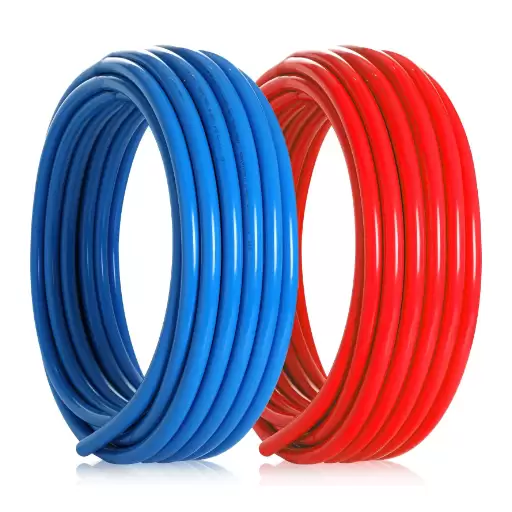
Tools Required for Installation
Process Equipment and Materials List: To install a 3/4 PEX pipe properly:
- PEX Tubing Cutter: a tool specially designed to make a clean, best cut without leaving any deformation on the PEX tubing.
- PEX Crimping or Clamp Tool: Used to make the copper crimp rings or stainless steel cinch clamps onto the connection so it is sealed and thus has no leaks.
- Go/No-Go Gauge: An important instrument used to check the accuracy of the crimped connection to confirm conformance to the installation standard.
- PEX Fittings: Usually brass or plastic, these durable fittings allow the connection of PEX pipes with other plumbing elements.
- Crimp Rings or Cinch Clamps: Used to fasten pipes onto the fittings, the choice depending on the crimp method.
- Manifold System: This gives a central system to manage efficient water flow through complex installations.
- Deburring or Calibration Tool: Creates smooth tubing ends that are calibrated for easy insertion into fittings.
- Drill and Hole Saw Kit: Used to carve precise pathways for tubing through walls, floors, or joists.
- Measuring Tape and Marker: Used to accurately measure and mark while on installation.
- Work Gloves and Safety Glasses: For your protection while handling tools and materials.
Having these tools at one’s disposal shall not merely make the procedure itself speedy, but also ensure competent, durable results in conformity with industry standards.
Step-by-Step Installation Process
- Pre-Installation Assessment: Before installation begins, it is recommended to do a careful site inspection. Check for all structural limitations, see whether access could be gained to critical areas like walls or ceilings, and see whether there are any obstructions along the way that could hinder the process. Check for any local building codes or regulations that must be adhered to, such that installation is done according to the required safety and operational standards.
- System Layout and Design: Draw a complete layout and prepare a design. Create schematics for the desired position of system elements, including tubing and fittings, and connectors. This stage must guarantee that the system works well while minimizing the total conduit length, thereby minimizing material costs and pressure loss during system operation.
- Material Preparation: Get materials prepared and set in order according to the system design. Cut tubing for lengths precisely by the layout; this requires smooth edges to prevent leaks or any weak points within the system. Label the components when needed to place them correctly during assembly in conformity with the layout already established.
- Drilling and Mounting: Using a drill and drill bits of the correct sizes, drill holes along the walls, floor, or joists where the tubing is to be laid. Ensure that these are proper on the design of the system to make sure the system works at optimum efficiency and also to reduce errors during installation. Mounting equipment must be drilled into the base securely. Loose mounting deeply affects system stability.
- Tubing and Fittings Assembly: Begin installation of tubing from the longest or the most complicated sections. Connect fittings, couplers, or elbows and tighten them securely to torque specifications as recommended. Apply sealing means, either thread tape or joint compound, as specified by the manufacturer, to avoid leakage.
- System Installation: Install other components such as valves, pumps, and filters, making sure that they are compatible with the core system. Check for alignment throughout the installation and verify the functionality according to the technical documentation of each component.
- Testing and Inspection: Following assembly, pressure tests are carried out in stages, checking for indications of leaks or weaknesses while elevating the system pressure to operating conditions, whilst monitoring all connections. Should any arise, they must be rectified before proceeding. Functional testing is conducted simultaneously to confirm that the system performs accordingly.
- Final Adjustments and Calibration: Adjust the system to the actual operational conditions. Calibrate the system to the intended use or to conditions as required by the Manufacturer. Make further adjustments to optimize operation, efficiency, and safety.
- Clean-Up and Documentation: Clean the area of the installation of all debris, unused materials, and equipment. Document every step of the process, including photographs, pressure test results, as well as declarations of what deviations may have been introduced from the original design. Present a complete system manual to the client or end-user to be used during future service or troubleshooting.
Following this step-by-step, the installation will be in line with good practice, thereby ensuring a good quality and commercially viable outcome while essentially adhering to all technical and safety standards.
Tips for DIY Enthusiasts
- Safety First: Before commencing any projects, ensure you are equipped with PPE such as safety goggles, gloves, and hearing protection. In addition, learn the proper usage of the tools and equipment to reduce accident exposure. Always work in a place with good ventilation, especially when working with chemicals or power tools.
- Thorough Planning Before Execution: The successful realization of any DIY project starts with careful planning. Draw and route your design with exact dimensions; make a list of the materials and tools you will be using. Foresee challenges and have alternatives ready to implement; this can save you time and money.
- Invest in Quality Tools and Materials: While it is tempting to go cheap, always opt for high-quality tools and materials that ensure durability and reliability. Cheap alternatives usually mean compromised results and need replacement in a short time, which might lead to increased costs down the road. Browse reviews and understand the specs for better purchasing decisions.
- Learn Basic Technical Skills: Get acquainted with the essential technical skills concerning your project. Whether it’s soldering, drilling, or programming a microcontroller, knowing the rudimentary skills will help you achieve a far better result. Many tutorials and guides online offer clear, comprehensive step-by-step instructions.
- Use Technology to Your Advantage: Beyond laser levels or digital calipers that provide precise measurement and alignment, design and planning software will allow you to prepare final-scale prototypes or mock-ups of your project and detect any ill considerations before execution.
- Keep Records to Improve on Your Work: Take detailed records of any progress relating to your work, especially photographs and notes on every step and phase. Documentation here acts as a reminder for future maintenance and also extends a window to assess and make improvements on processes so that continuous improvement yields better outcomes for the next project.
If followed in earnest, these guidelines will assure DIYers of a professional finish while circumventing errors common to beginners, thus maximizing time efficiency.
Certifying Your 3/4 PEX Pipe Installation
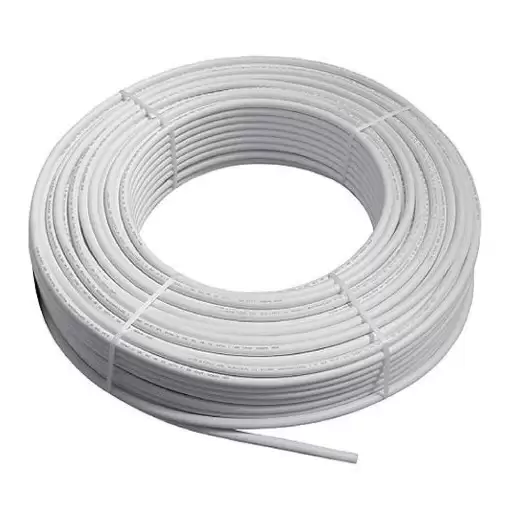
Understanding Certification Standards
Certification standards for 3/4 PEX pipe installations are established so as to assure safety, functionality, and durability under variable operational conditions. Such standards are defined by reputable entities such as ASTM International, NSF International, and local building codes. For example, ASTM F876 and F877 specify performance requirements for PEX tubing in terms of its dimensions, pressure ratings, thermal performance, and material durability. Similarly, NSF/ANSI 61 certifies that the pipes conform to health and safety requirements for potable water systems, thereby preventing any harmful contaminant from leaching into the water supply.
These standards entail rigorous performance testing, including burst pressure testing, cyclic pressure testing, and environmental stress testing, among others. Each test is designed to simulate whether the piping can fully withstand extremes of temperature, the highest pressure, and chemical exposure customarily found in generally used plumbing systems. Besides, PEX systems may also need to comply with the local building code requirements, such as those prescribed by the IPC (International Plumbing Code) or UPC (Uniform Plumbing Code), which would help in integrating PEX systems into the respective standards and practices.
The certification standards will ensure that contractors and even DIY installers will eventually pass inspection with flying colors, thus ensuring that the plumbing systems will last longer and remain reliable. Documentation of compliance, including lab testing results and certified product labels, becomes equally imperative to meet regulatory expectations and build confidence among the end users. This strong platform then becomes the very foundation for sustainable and performing water infrastructure systems for residential and commercial applications.
How to Certify Your PEX System
Certifying your PEX system involves meeting applicable industry standards and regulatory requirements to ensure the safety and durability of the system. The first step would be to identify product standards like ASTM F876 and F877 regarding the dimensions, material, and performance of PEX tubing. Moreover, ensure the NSF standards apply to the system: NSF/ANSI/CAN 61 for potable water safety or NSF/ANSI 14 on plastic piping system components.
First, select a third-party certification organization accredited by ANSI, CSA Group, or a similar accrediting body. The next step is to submit technical details regarding the technical specifications, manufacturing processes, material composition, and performance data to them for assessment. The certifying body will carry out laboratory testing on the PEX tubing to ascertain pressures, thermal expansion, chlorine resistance, and oxidative stability of the material, and the evaluations are done depending, inter alia, on the test procedure of ASTM F2023 for testing longevity levels of hot chlorinated water environment.
Upon successful completion of the testing, the certifying body will provide a conformance document confirming compliance, such as a certificate or mark for certification, which must be retained for periodic audits and is necessary for proof of compliance during inspection periods. Keeping good records can ease product approvals in various locations and reduce delays when inspecting or approving projects.
When certified, a system can be marketed by manufacturers and contractors not only as compliant with code but as something customers and stakeholders can be confident in where reliability counts, especially in high-demand applications.
Comparing 3/4 PEX Pipe with Other Plumbing Materials
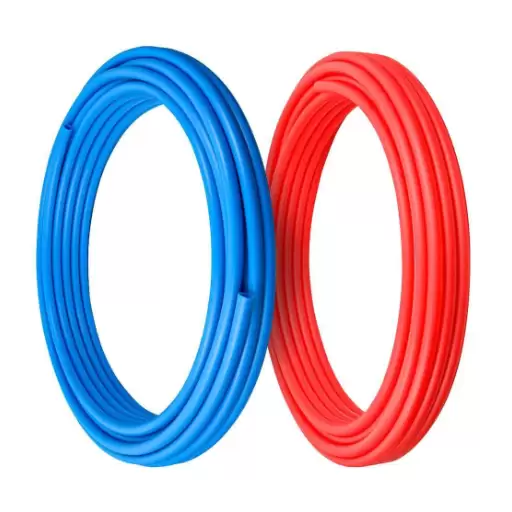
Cost Analysis: PEX vs. Copper vs. PVC
PEX is cheaper and more flexible, copper is tough and expensive, and PVC is cheap but limited to non-hot water use.
|
Feature |
PEX |
Copper |
PVC |
|---|---|---|---|
|
Price |
Affordable |
Expensive |
Budget |
|
Longevity |
Moderate |
Excellent |
Limited |
|
Bendability |
High |
Low |
Medium |
|
Setup Ease |
Simple |
Difficult |
Simple |
|
Sunproof |
No |
Yes |
No |
|
Heat Use |
Suitable |
Suitable |
Unsuitable |
|
Lifespan |
40-50 yrs |
50-70 yrs |
Short |
|
Eco Impact |
Moderate |
High |
High |
|
Freeze Safe |
Yes |
No |
No |
Performance Metrics of Different Pipe Materials
The functional requirements for plumbing materials would encompass the basic operating requirements of durability, thermal conduction, ease of installation, and life span. Each kind of material has a particular set of advantages tailored to the kind of installation at hand.
- PEX Pipes (Cross-linked Polyethylene): Being flexible, PEX has garnered a good reputation for corrosion resistance and thermal tolerance. It is rated for water temperatures from 33 to 200 degrees Fahrenheit and possesses a very low coefficient of thermal conductivity, so heat loss through pipes is practically negligible. Being resistant to freeze-thaw conditions, the risk of bursting is theoretically less than for solids. PEX installation requires less work since it needs fewer fittings and can easily find its way around obstacles.
- Copper Pipes: Copper, with its high durability, resists UV radiation and thus can be used both indoors and out. It can hold up to high pressure and temperature extremes (400°F), so it is appropriate for a hot water supply. However, copper is susceptible to corrosion in water that is highly acidic or alkaline and might affect long-term viability. Also, it needs to be soldered during installation, requiring highly skilled labor, which leads to higher labor costs.
- PVC Pipes (Polyvinyl Chloride): PVC is predominant because of the low first cost and ease of handling. It is lightweight and non-corrosive, and hence suitable for non-potable water and drainage. PVC is good for a long life, but can withstand only medium heat (the maximum is at 140°F), making it inappropriate for handling hot water. Further, prolonged UV radiation exposure would weaken its structural integrity.
Upon studying these metrics, the decision can be made by an engineer or contractor about the best material according to the specific requirements of their projects, where performance is weighed against economic considerations.
Long-Term Maintenance Considerations
When considering long-term maintenance, the piping materials must be checked for durability, environmental exposure, and resistance to the wear of time. For example, PVC requires low maintenance when installed in an environment with low UV exposure, but it should undergo regular inspection to check for degradation due to sunlight. If installing in the outdoors, it should be adequately shielded or painted with UV-resistant paint to enhance its longevity.
At the same time, galvanized steel or cast iron metal pipes need periodic maintenance to prevent corrosion and calcification, respectively. Anti-corrosion coatings and cleaning of the interior walls are some of the measures that can be taken to arrest these problems. However, as time goes on, the effort and costs of maintenance tend to rise compared with the non-metallic counterpart. Stainless steel is another variation of metal material that can resist corrosion, but can be subjected to deposition and sometimes cleaning to retain the flow rates.
In my opinion, maintenance requirements in the lifetime of the system depend largely on the choice of material. For projects in adverse environments, the use of corrosion-resistant materials or materials appropriate to the temperature and pressure requirements will certainly minimize long-term maintenance costs. Scheduled inspections and managing environmental parameters beforehand will certainly guarantee system reliability and reduce sudden repair costs.
Extending the Lifespan of Your PEX Plumbing System
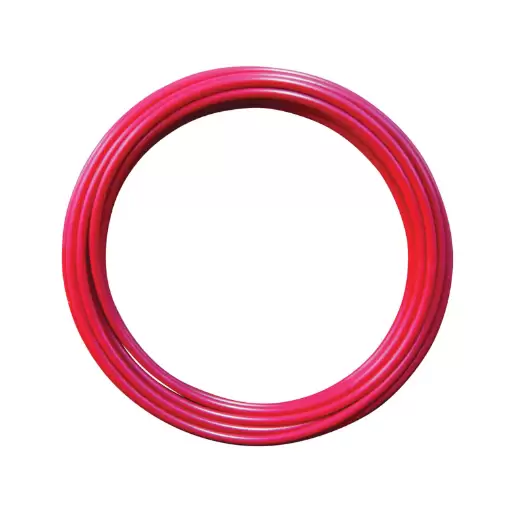
Best Practices for Maintenance
Maintenance must be in line with a management protocol to sustain greater life expectancy and guarantee optimal system performance of PEX plumbing systems. While PEX tubing is considered to be very mechanical, with built-in resistance toward corrosion, preventive methods may extend its life further. Periodical inspection of all visible pipe sections should be carried out to notice early signs of concern, such as discoloring, kink ability, or stress cracks in the installation, which may hint toward more severe underlying concerns before they are obvious. System pressure levels will have to be monitored, and any sustained condition of high pressure avoided; unnecessary up-pressure would strain connected interfaces and fittings over time.
Temperature extremes can pose a threat to the plumbing system; check if the system is adequately insulated, especially in areas susceptible to freezing conditions. Heat tape application or pipe sleeves are also worth considering for keeping things running during fierce weather. Also, consider chemical compatibility; please do not subject PEX systems to aggressive solvents, petroleum-based products, or improper cleaning agents, as such substances degrade this material over time.
Finally, keeping proper records of inspections and maintenance work enhances trend analysis for informed decision-making. Coupled with better practice and improved diagnostic tools such as thermal imaging technologies, this enables an accurate pinpointing of potential problems, thus avoiding expensive downtime or failures.
Identifying Common Problems and Solutions
In one manner or the other, there are all too common issues that tend to recur during the integrity evaluation of materials or systems. Surface corrosion is one such canvas, with corrosive agents etching out its mark over time under the influence of moisture, salt, or industrial contaminants. In the prime instance where this problem arises, preventive coatings, on the other hand, based on epoxy or zinc primers, ought to be applied, and in addition, good cleaning practices should be observed to remove contaminants prior to making it worse.
The next concern is the mechanical wear and fatigue in moving components and parts, arising mostly owing to improper lubrication, misalignment, or poor-quality materials. Addressing this involves the use of high-quality lubricants of the correct viscosity, performing alignment checks during planned maintenance, and selecting components made from wear-resistant alloys.
Structural stresses can develop during thermal expansion and contraction cycles, causing cracks or deformation, maybe after a long time. The use of thermally stable materials and the design of the system to accommodate temperature-related changes can help to alleviate these issues.
Electrical systems are prone to challenges, including overheating, short circuits, and insulation failures. Utilizing advanced diagnostic instruments such as infrared thermography and electrical load analysis helps detect problem areas for remedial actions so that they may be corrected in time. Preventive measures include appropriate insulation, surge protection, and regular testing, ensuring these systems remain safe to operate and in working order for a long period. Employing logical troubleshooting methodologies combined with the implementation of these new diagnostics technologies presents a means of curbing these common problems and driving systems toward optimized functionality while mitigating the risks involved.
References
Frequently Asked Questions (FAQ)
Q: What is a 3/4 PEX pipe used for?
A: A 3/4 PEX pipe is commonly used in plumbing applications for both hot and cold water distribution. Its flexibility and resistance to corrosion make it ideal for residential and commercial plumbing systems.
Q: How does a 3/4 PEX pipe compare to copper pipes?
A: Compared to copper pipes, a 3/4 PEX pipe is lighter, easier to install, and generally less expensive. PEX also resists scale and chlorine, preventing corrosion and degradation over time.
Q: Can I use 3/4 PEX pipe for outdoor applications?
A: While 3/4 PEX pipe can be used outdoors, it must be protected from direct sunlight, as UV rays can degrade the material. Insulation is also recommended in colder climates to prevent freezing.
Q: What fittings are compatible with 3/4 PEX pipe?
A: 3/4 pex pipe is compatible with a variety of fittings, including crimp, clamp, and push-fit connectors. These fittings allow for secure connections without the need for soldering.
Q: Is 3/4 PEX pipe safe for drinking water?
A: Yes, 3/4 PEX pipe is safe for drinking water. It is approved by various health and safety standards, ensuring that it does not leach harmful chemicals into the water supply.
Q: What are the advantages of using 3/4 PEX pipe?
A: The advantages of using 3/4 PEX pipe include its flexibility, resistance to scale buildup, ease of installation, and reduced risk of leaks. It is also resistant to freezing, making it a reliable choice for various climates.
Q: How do I install a 3/4 PEX pipe?
A: Installing a 3/4 PEX pipe involves cutting the pipe to the desired length, securing it with appropriate fittings, and ensuring all connections are tight. It is important to follow local plumbing codes and guidelines during installation.
Q: Can I connect 3/4 PEX pipe to other types of pipes?
A: Yes, you can connect 3/4 PEX pipe to other types of pipes, such as copper or PVC, using appropriate transition fittings. This allows for versatility in plumbing systems.
Q: What should I consider when choosing a 3/4 PEX pipe?
A: When choosing a 3/4 PEX pipe, consider factors such as the pipe’s pressure rating, length, and compatibility with existing plumbing. Additionally, check for certifications to ensure the pipe meets safety standards.



